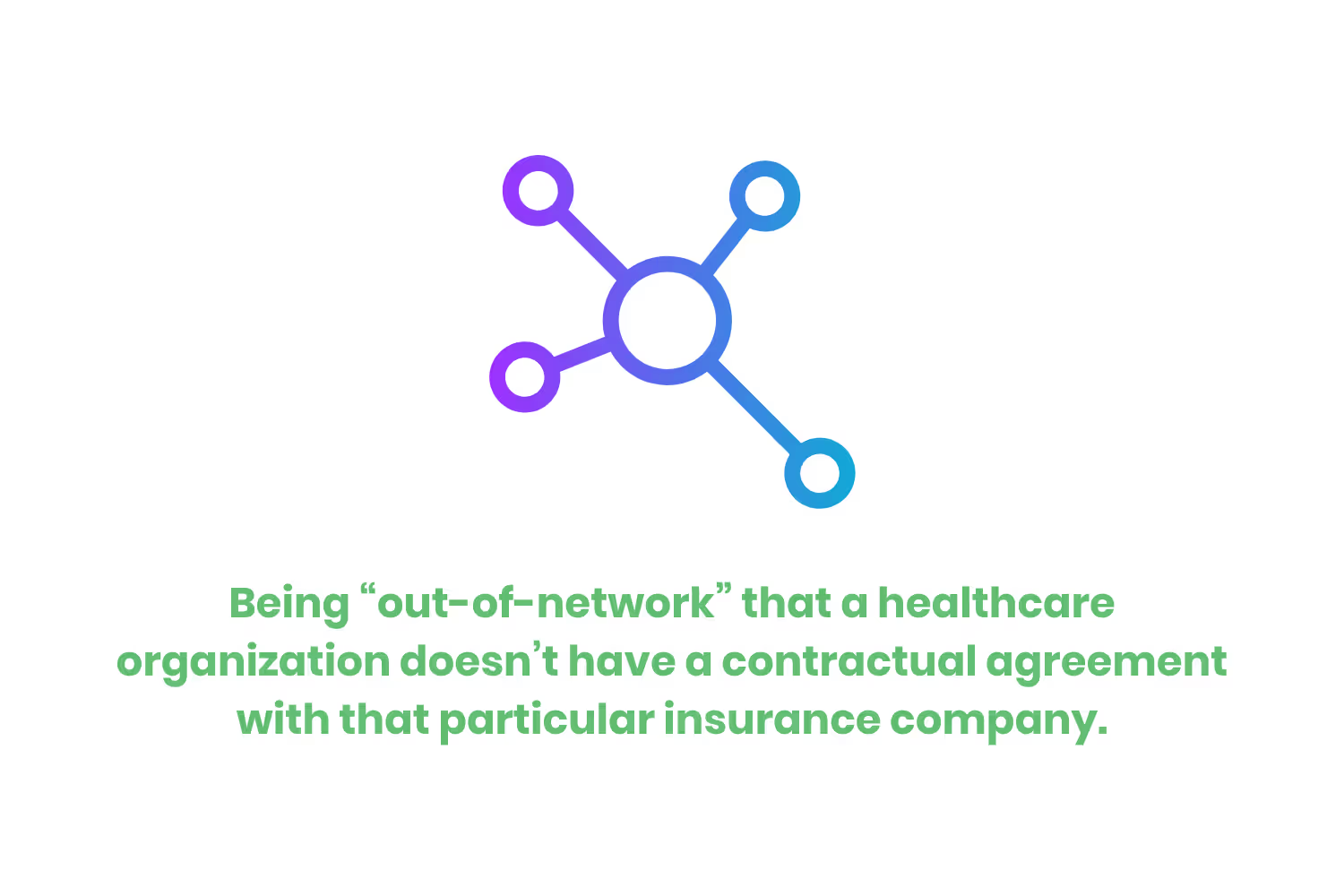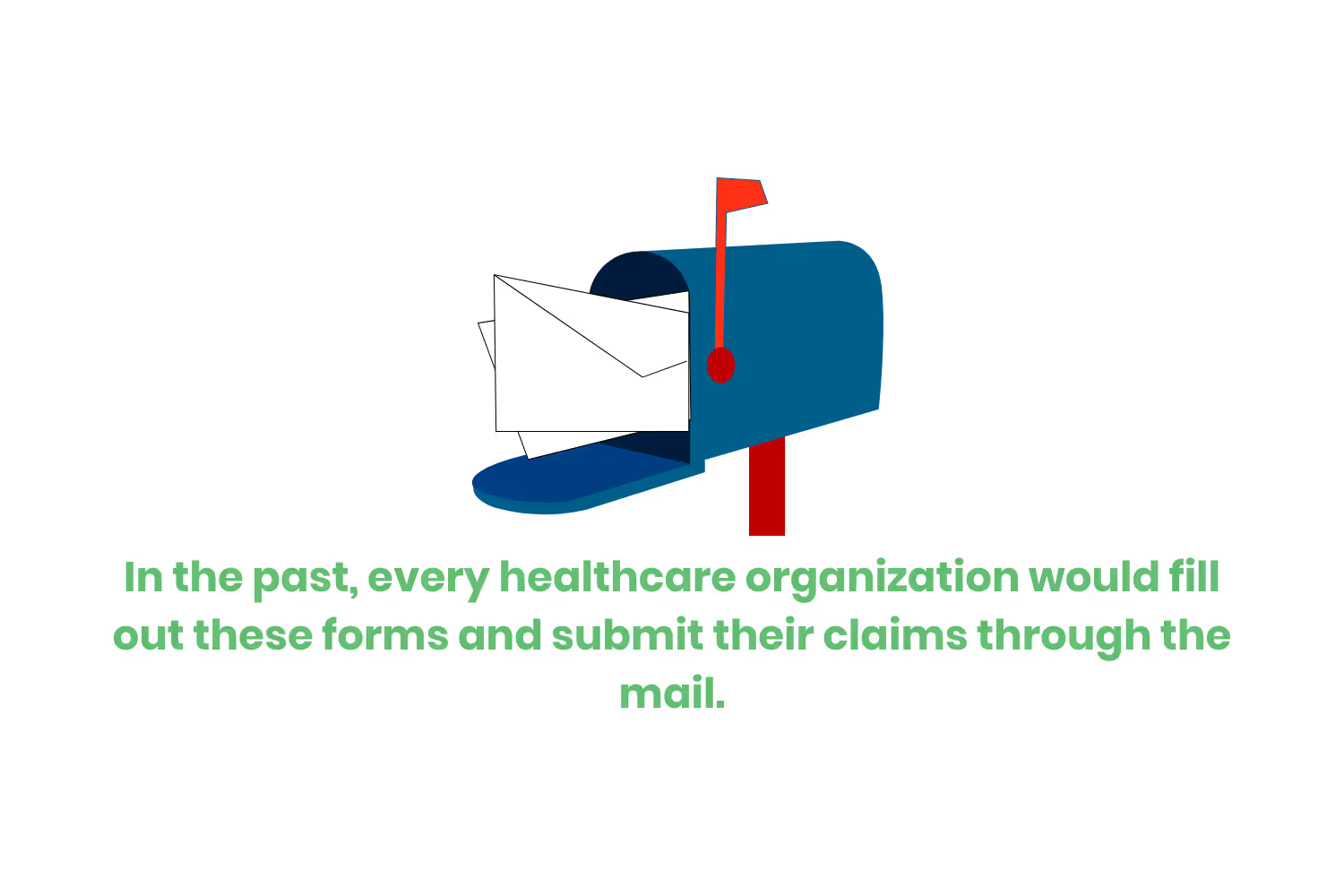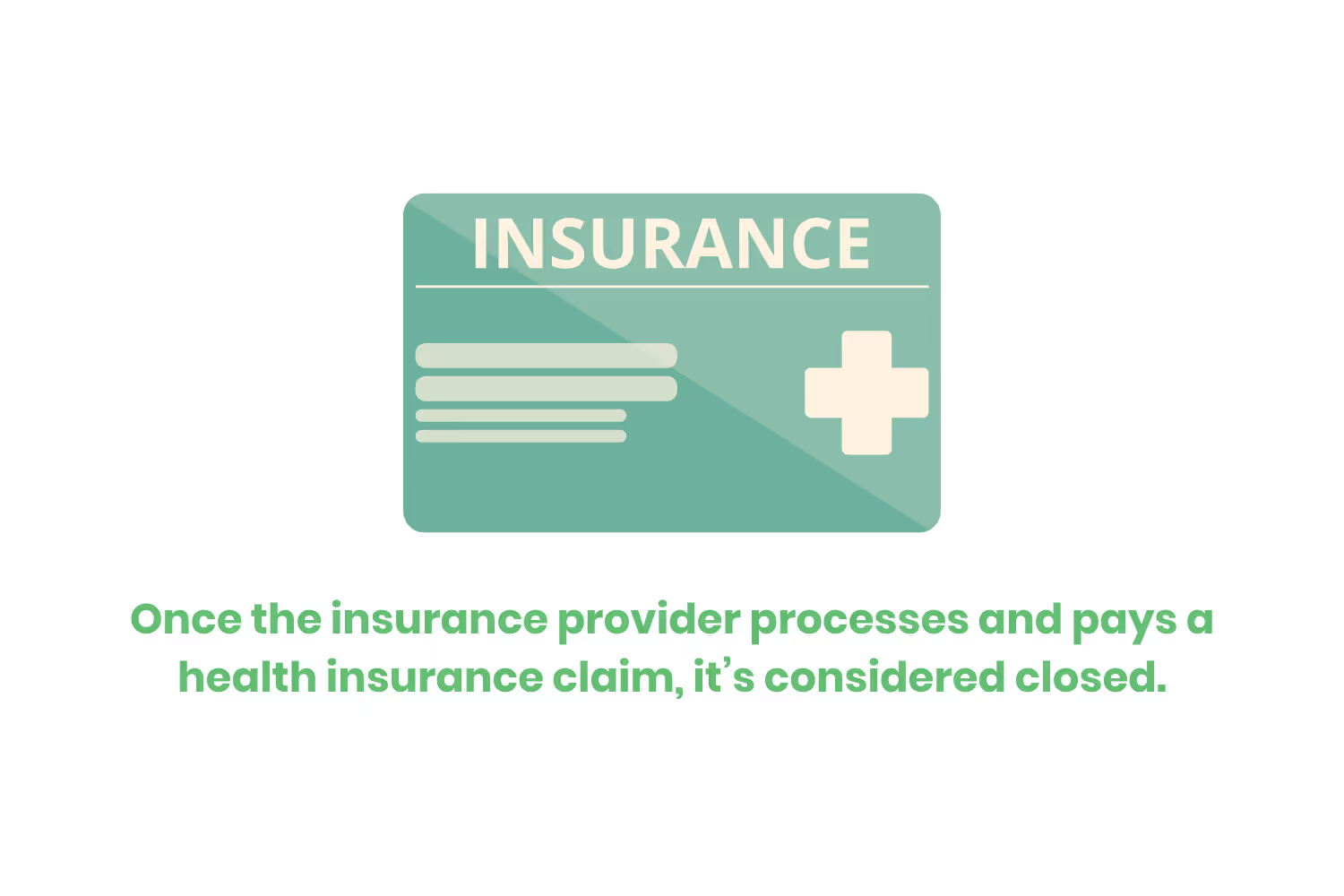The Claim Health Insurance Process: An Ultimate Guide
The health insurance process is complex and crucial. Let’s break it down.

When you call your doctor's office to schedule an appointment, you also kick off the revenue cycle. We talked about this cycle in a previous blog post. Long story short, when you schedule an appointment they ask you for three specific data points…
- Your name
- Your date of birth
- Your insurance provider
These pieces of data are critical for the insurance process. They ask for this information to identify you but also to check if your insurance is in network. Being in a network can mean a few things. We will get to that later.
For now, you only need to know that the health insurance process is complex and crucial.
Aspects of The Claim Health Insurance Process
The health insurance claims process is important to understand.
Especially when you consider that every insurance company has its own process. And, on top of that, every state does as well.
Thus, you can imagine how difficult it is to format millions of patient claims in a thousand different ways.

Most medical practices utilize clearinghouses to help streamline this process. A clearinghouse helps with the submission of claims. They act as the middleman between insurance companies and healthcare organizations.
This is beneficial for the patients as well as the providers. Patients benefit financially as their insurance covers a portion of their procedures. Meanwhile, healthcare providers receive prompt payments. Health insurance claims are key to both sides.
Understanding Health Insurance Policies
To ensure insurance coverage over a procedure, there are a few steps.
For the most part, the receptionists check with their policy and ensure that your insurance is “in-network”. This process usually happens before they officially schedule your appointment. In-network healthcare providers have an agreement in place with a particular insurance provider.
Though this sounds simple, there are several areas for mistakes. The biggest issue that follows insurance coverage is being out of network.

What does being out-of-network mean? It signifies that they don’t have a contractual agreement with that particular insurance company. They haven’t agreed to the terms of the insurance provider therefore they cannot make any transactions with them.
The process of checking insurance coverage stems from the receptionists but clearinghouses help. Clearinghouses make it easier for healthcare providers to understand in-network and out-of-network insurances.
Initiating a Health Insurance Claim
A claim is typically initiated following a treatment, appointment, or prescription. These are the primary areas for which insurance coverage comes into play. Medical practices have to keep track of all patient's invoices, recipes, and medical records.
This may seem easily accomplished in smaller practices. But, once you multiply the number of patients by the number of different insurance providers, things don’t seem so easy anymore.
Thousands of patients need their claims processed every day by the same office. Again, a clearinghouse helps get these claims approved and processed. That way, healthcare facilities can focus on treating their patients.

During or after the provider provides services to a patient, the preliminary use of medical coding. Medical coding is the process of converting healthcare diagnoses, treatments, and procedures into standardized codes. These codes exist for billing, insurance, and record-keeping purposes.
Medical coding is essential for the claims and the billing process. Insurance companies use these codes to appropriately bill the patient. There are different codes for every procedure. For example, the International Classification of Diseases (ICD) code for a broken arm is S42. 309A. There’s a code for essentially everything you could go to the doctor for…which leads to some funny ones. Check out our list of funny ICD codes here.
If these codes were missing, insurance companies would have a very hard time billing the correct amount to patients. This leads to a bigger problem of underpaying medical facilities, or overcharging patients. The development of medical coding revolutionized the healthcare billing industry.
Once these medical codes exist within the system, it’s time to create the claim.
Completing The Claim Form for Health Insurance
So, how do you submit a claim to a health insurance provider? Well, every health insurance has standardized a claim submission form that they require. The technical term for this paper form is a CMS-1500.
In the past, every healthcare organization would fill out these forms and submit their claims through the mail. You can imagine how clunky this process was…especially when you consider the chance of postal delays occurring.
Once the industry started to embrace technology, the claim form completion process got much easier. The standardized claim form format transitioned from CMS-1500 paper forms to ANSI 835 & 837 electronic forms.
The first step in filling out the claim form is inputting…
- Patient information
- Provider information
- Diagnosis codes
- Procedure codes
- Service details
The claim holds all the information that’s necessary to the insurance provider.
Once the information is all organized, the medical facility sends it through a clearinghouse to create and submit the claim. If the facility doesn’t use a clearinghouse, it’s up to them to create and submit the claims themselves.
The clearinghouse creates the claim using the proper formatting. In most cases, the proper formatting is the ANSI 835 & 837. But, believe it or not, some health insurance still only accept CMS-1500 paper forms. This extra step of organizing the information speeds up the approval process. It also increases the chances of the claim getting approved.

Clearinghouses then recheck the claims. “Claim scrubbing” is the industry term for this process. Claim scrubbing is the process of eliminating any information entry errors.
Some insurance providers only accept claims from certain clearinghouses. This means that clearinghouses need to utilize each other to ensure the correct processing of claims. This is a confusing step so here's an example.
Anthem Blue Cross Blue Shield is one of the largest healthcare insurance providers. They are a reputable company that serves 78 million people. Because of the number of patient claims they must process, they only accept medical insurance claims through Availity. Availity supports many large health insurers. They have billions of claims to process every year, meaning they need other clearinghouses' support.
Having additional clearinghouses involved in the claims process is necessary. Since Anthem requires claims to go through Availity, it must be the last step. However, the use of other clearinghouses before Anthem is essential for streamlining this process. The primary clearinghouses gather and input information, and do all of the paperwork. Then, the secondary clearinghouses officially submit the claims. Without the primary clearinghouse, it would take much longer to get the claim approved.
This is just one example of a large insurance company only accepting claims from one clearinghouse. Makes sense right? Anthem needs to ensure they’re being efficient with the mass amounts of claims. Eliminating any confusion that stems from multiple clearinghouses is important.
Once the claim gets processed, it’s classified as clearinghouse-approved. The clearinghouse-approved claim is then sent to the insurance provider.
Insurance Provider Claim Process
A claim receipt occurs when the insurance receives the claim from the provider or the clearinghouse. This marks the date and time to ensure the prompt processing of claims.
The next step in the insurance provider claims process is the initial review. The step involves a comprehensive check for completeness and accuracy. This is where the basic information such as patient details, provider details, and service dates get verified. This verification process can take anywhere from a few days to two weeks.
Medical necessity follows the initial review. During this step, the insurance provider checks if the procedure is medically necessary for the patient. If it is, the insurance company will follow through with the claim process. If the insurance company determines that the procedure wasn’t medically necessary, the claim will get sent back to the healthcare provider as a denial. Luckily, if this happens you can appeal this type of denial.
The claim-appealing process involves the provider submitting additional documentation. This documentation should help prove its significance to the patient's health. You can learn more about handling appeals here.
The pricing and payment decision is one of the last but most important steps. This step determines whether the claim gets approved or denied and what the insurance company will cover. Deductibles, co-pays, and coinsurance amounts get calculated at this step.

Once the insurance provider processes and pays a health insurance claim, it’s considered closed. This means the completion of all necessary reviews, approvals, and payments occurred. The finalized claim goes into the insurance company's records.
Remittance is the next step in the health insurance process. This is when the provider receives the payment. The patient is responsible for any outstanding balance beyond what the insurance company covered. In most cases, this is the point in the process where the healthcare organization and insurance provider split off.
From here, the healthcare organization is in charge of collecting any outstanding balances. Most clearinghouses don’t help with this aspect of the process, either.
Except Etactics. We help healthcare organizations by providing both clearinghouse AND statement services.
Anyway, the statement tells the patient the amount they owe, what the insurance covers, and when the payment is due.
The process of getting patients to pay their bills on time is difficult. Our statement services help providers with reminding their patients about overdue bills. They send reminders through mail, email, text messages, and other channels. This helps ensure the timely collection of payments before the certain deadline set by the healthcare facility.
Claim Health Insurance Process Completion
The claim health insurance process officially concludes once two things occur. First, the claim needs to be fully processed by the insurance provider. Second, the patient has to have paid their outstanding balance. Though this process seems like it follows a routine, mistakes occur in many areas.
Some of the most common mistakes involving the insurance provider include…
- Delayed processing
- Incorrect determination of coverage
- Denial code errors
- Communication errors
These all could deter the claim from reaching the closed status. Using a clearinghouse eliminates these errors from occurring, protecting your bottom line.

Conclusion
The complexities of the health insurance claims process require attention to detail. Because of the several different procedures for each insurance provider, healthcare facilities need help. From verifying coverage and initiating claims to processing payments and closing claims, each step plays a critical role in ensuring that healthcare providers and patients receive accurate and timely statements.
Clearinghouses facilitate accurate submission and processing of claims. This reduction in errors is essential for healthcare provider's profits.
It is nearly impossible to develop a perfect process when it comes to healthcare insurance claims. Clearinghouse elimination of the common mistakes healthcare providers make is one step in streamlining the process. Understanding the process and knowing where to pay special attention could make or break the bank.
Emphasize your product's unique features or benefits to differentiate it from competitors
In nec dictum adipiscing pharetra enim etiam scelerisque dolor purus ipsum egestas cursus vulputate arcu egestas ut eu sed mollis consectetur mattis pharetra curabitur et maecenas in mattis fames consectetur ipsum quis risus mauris aliquam ornare nisl purus at ipsum nulla accumsan consectetur vestibulum suspendisse aliquam condimentum scelerisque lacinia pellentesque vestibulum condimentum turpis ligula pharetra dictum sapien facilisis sapien at sagittis et cursus congue.
- Pharetra curabitur et maecenas in mattis fames consectetur ipsum quis risus.
- Justo urna nisi auctor consequat consectetur dolor lectus blandit.
- Eget egestas volutpat lacinia vestibulum vitae mattis hendrerit.
- Ornare elit odio tellus orci bibendum dictum id sem congue enim amet diam.
Incorporate statistics or specific numbers to highlight the effectiveness or popularity of your offering
Convallis pellentesque ullamcorper sapien sed tristique fermentum proin amet quam tincidunt feugiat vitae neque quisque odio ut pellentesque ac mauris eget lectus. Pretium arcu turpis lacus sapien sit at eu sapien duis magna nunc nibh nam non ut nibh ultrices ultrices elementum egestas enim nisl sed cursus pellentesque sit dignissim enim euismod sit et convallis sed pelis viverra quam at nisl sit pharetra enim nisl nec vestibulum posuere in volutpat sed blandit neque risus.

Use time-sensitive language to encourage immediate action, such as "Limited Time Offer
Feugiat vitae neque quisque odio ut pellentesque ac mauris eget lectus. Pretium arcu turpis lacus sapien sit at eu sapien duis magna nunc nibh nam non ut nibh ultrices ultrices elementum egestas enim nisl sed cursus pellentesque sit dignissim enim euismod sit et convallis sed pelis viverra quam at nisl sit pharetra enim nisl nec vestibulum posuere in volutpat sed blandit neque risus.
- Pharetra curabitur et maecenas in mattis fames consectetur ipsum quis risus.
- Justo urna nisi auctor consequat consectetur dolor lectus blandit.
- Eget egestas volutpat lacinia vestibulum vitae mattis hendrerit.
- Ornare elit odio tellus orci bibendum dictum id sem congue enim amet diam.
Address customer pain points directly by showing how your product solves their problems
Feugiat vitae neque quisque odio ut pellentesque ac mauris eget lectus. Pretium arcu turpis lacus sapien sit at eu sapien duis magna nunc nibh nam non ut nibh ultrices ultrices elementum egestas enim nisl sed cursus pellentesque sit dignissim enim euismod sit et convallis sed pelis viverra quam at nisl sit pharetra enim nisl nec vestibulum posuere in volutpat sed blandit neque risus.
Vel etiam vel amet aenean eget in habitasse nunc duis tellus sem turpis risus aliquam ac volutpat tellus eu faucibus ullamcorper.
Tailor titles to your ideal customer segment using phrases like "Designed for Busy Professionals
Sed pretium id nibh id sit felis vitae volutpat volutpat adipiscing at sodales neque lectus mi phasellus commodo at elit suspendisse ornare faucibus lectus purus viverra in nec aliquet commodo et sed sed nisi tempor mi pellentesque arcu viverra pretium duis enim vulputate dignissim etiam ultrices vitae neque urna proin nibh diam turpis augue lacus.




